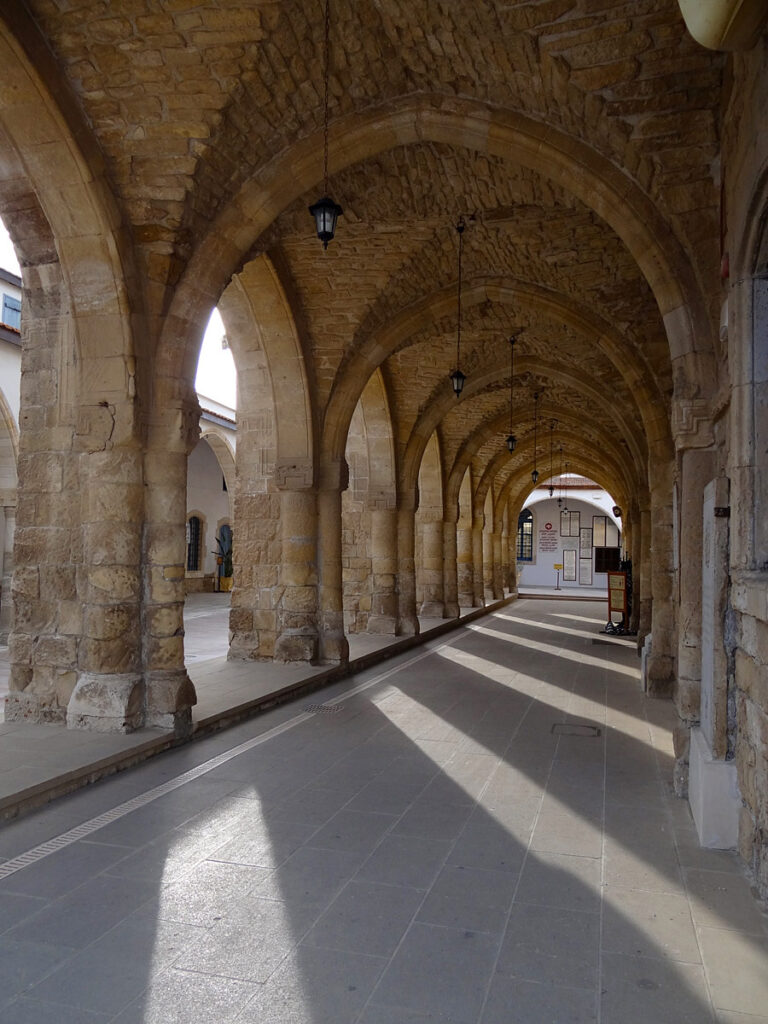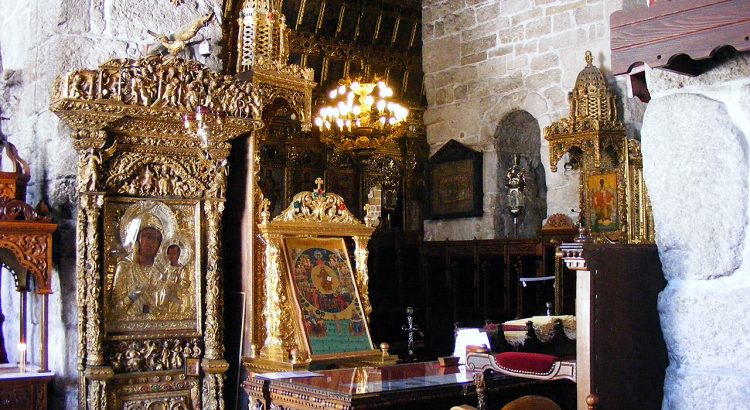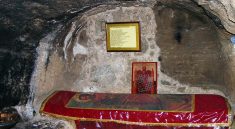Lazarus, whom Jesus loved, the man who would be buried twice, left Bethany after his resurrection and went to Cyprus because “the chief priests decided to kill Lazarus as well (as Jesus), since it was on his account that many of the Jews were leaving them and believing in Jesus.” [John 12:10-11]
According to ancient Cypriot tradition he went to Kition, Larnaca, Cyprus, where later he was met by Paul and Barnabas on their missionary journey through Cyprus, and was ordained by them as the first Bishop of Kition. Tradition also holds that Mary, the Mother of Jesus, and Martha, the sister of Lazarus, came to the island went to visit him.
The church we see today, dating back to the early tenth century is in fact the third church built upon this site, which was built over the site of the original church where Lazarus was laid to rest.
The foundations of one of the earlier churches may still be seen beneath the current St Lazarus Church inside the catacombs and Lazarus’ tomb. The tomb of the saint dates to the 1st century.
The Emperor of Byzantium, Leo VI the Wise in exchange for some of the Saint’s relics, sent money and technicians to build the church that we see today in Larnaca.
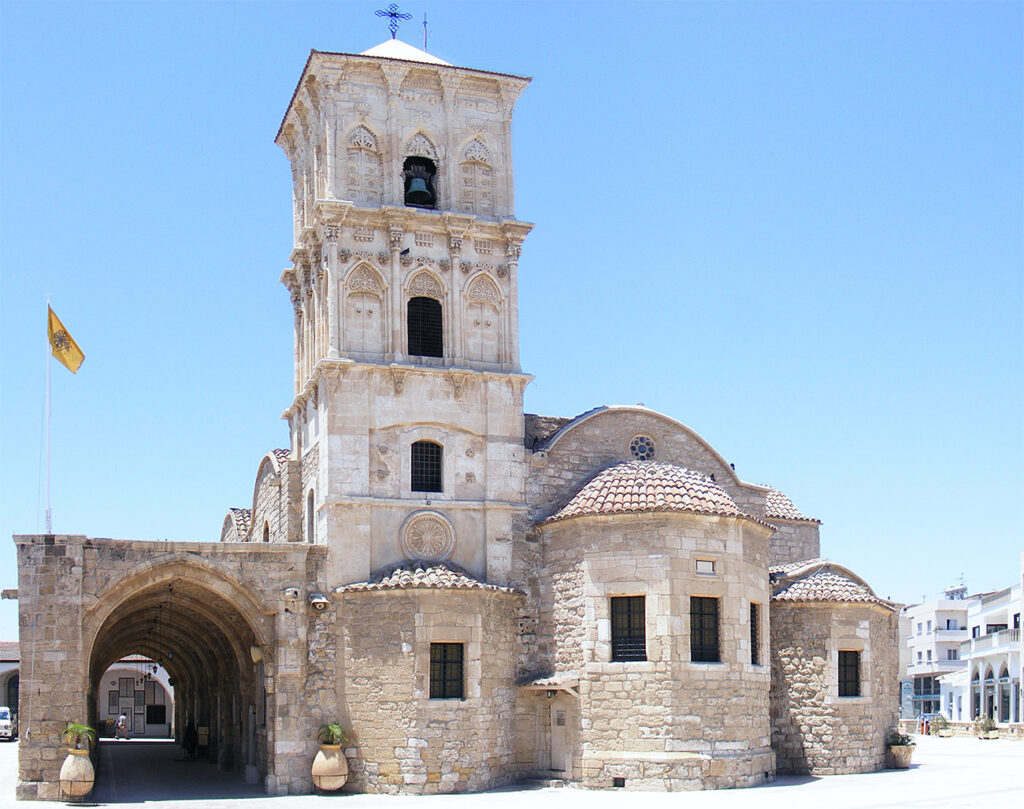
Ancient Icon depicting St Lazarus
![]()
Entrance to the Tomb of Lazarus in St Lazarus Church
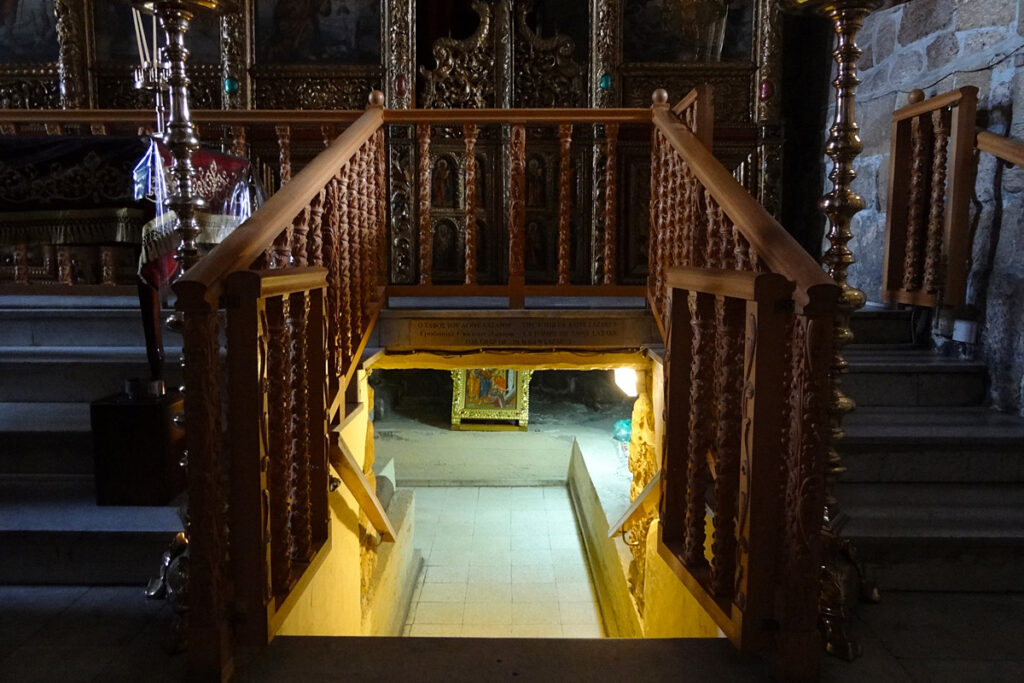
Down in the tomb of St. Lazarus
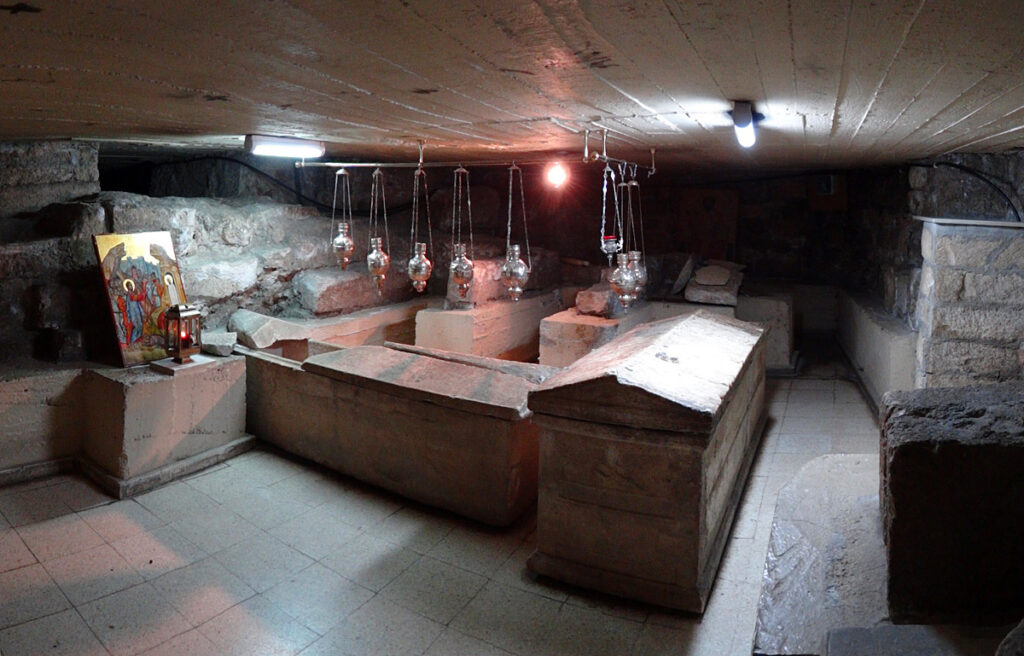
Interior of St Lazarus Church
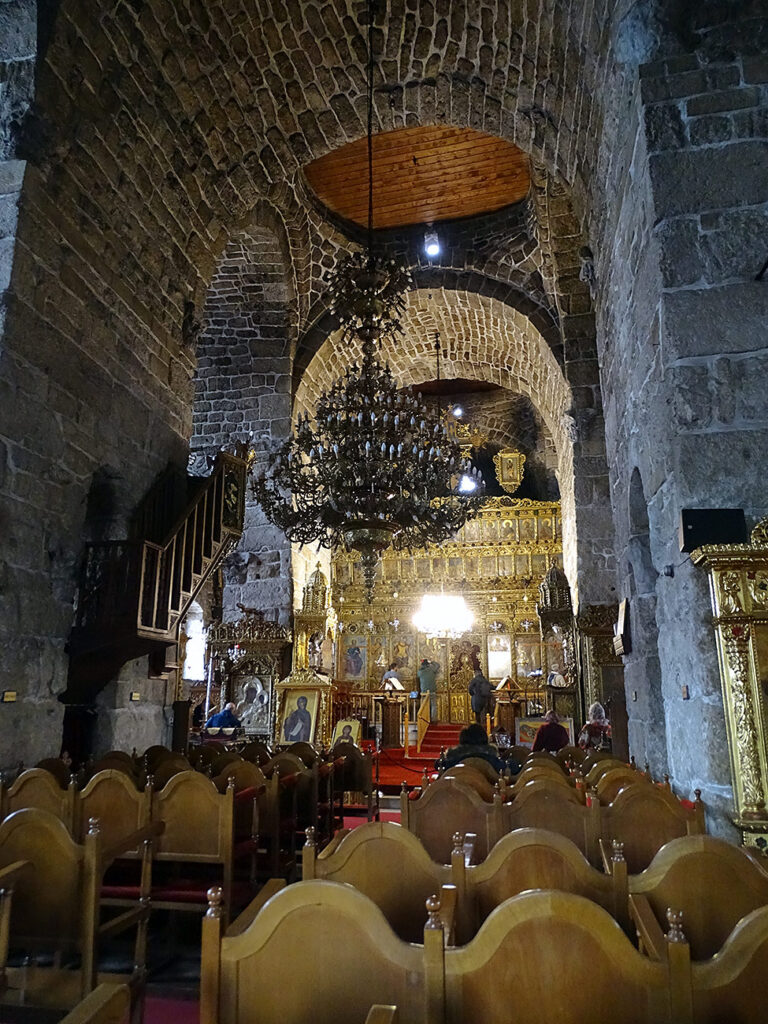
His remains are in the reliquary.
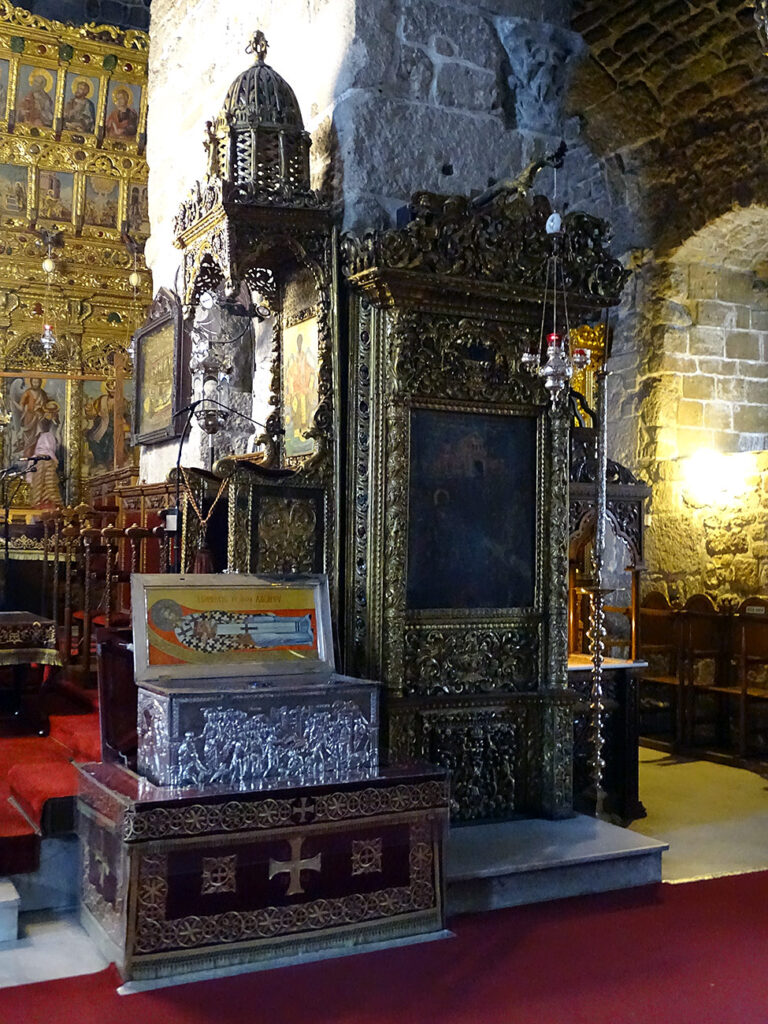
Cypriot tradition is not the only source of information about Lazarus. The discovery of his, already ancient, sarcophagus was made in 890AD.
Lazarus was buried for a second time beneath a tiny church on the site of the present Ayios Lazaros church in Larnaca, his sarcophagus was inscribed with:
“Lazarus four days dead and friend of Christ”.
The tradition that Lazarus came to Cyprus from Bethany is supported not only by archaeological evidence, but also by the credible religious historian, Arethas, Archbishop of Cesarea, who related the discovery of Larzarus’ tomb and the transport of his bones to Constantinople in the late ninth century.
Lazarus was Back in the News in 2012
As an interesting aside, the Cyprus Orthodox church presented some of Lazarus’ relics to its Russian counterpart, during an elaborate ceremony held at Lazarus church in June 2012.
Vaulted Promenade outside St Lazarus Church
